Looking for a last-minute substitute for ricotta cheese? This post has 9 substitutes for ricotta cheese including cream cheese, cottage cheese, tofu, and so much more!
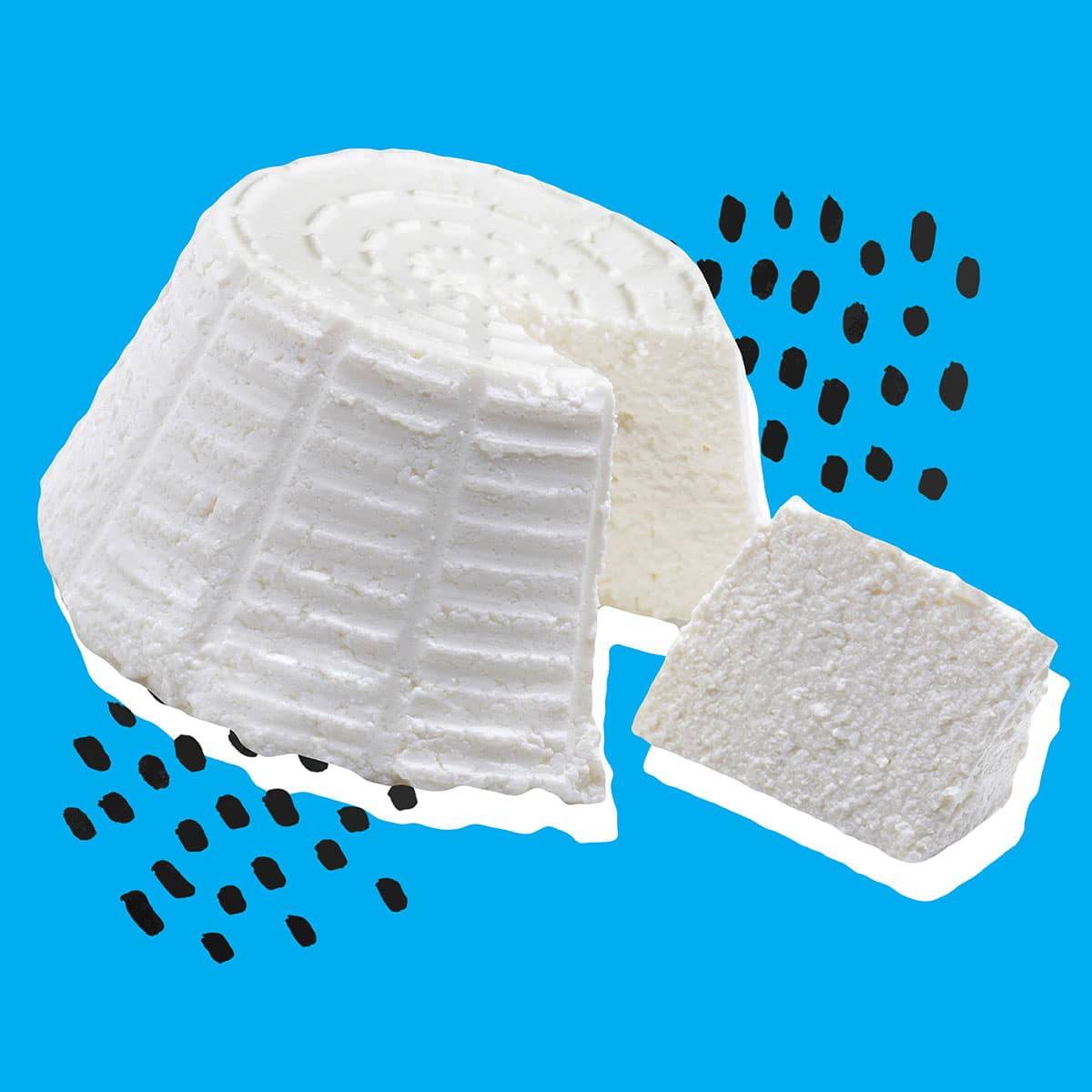
What is Ricotta Cheese?
Ricotta is a soft-fresh Italian cheese that is eminently spreadable. This is the go-to cheese for lasagna, crepes, galettes, and a host of other favorites. Ricotta is generally made of cow’s milk.
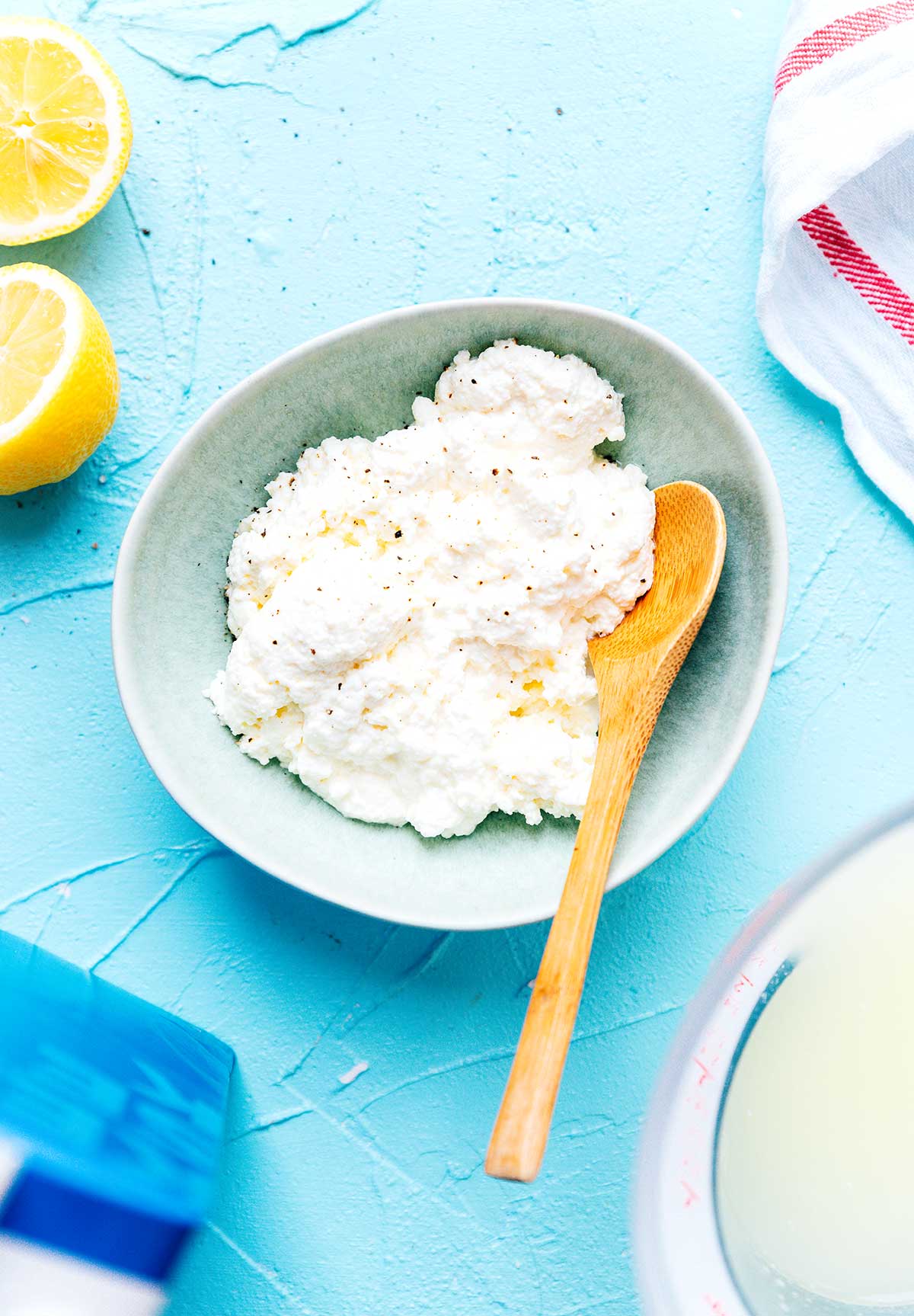
How is Ricotta Cheese Made?
Ricotta cheese is traditionally made by heating the whey which is a byproduct of cheese-making. Whey is the liquid that remains after curds have formed and have been removed to make other cheeses like mozzarella or cheddar.
The whey is gently heated, usually to around 170-185°F (77-85°C). This heating causes the remaining proteins in the whey to coagulate and form curds. To aid in the coagulation process and to lower the pH of the whey, an acid source is added. This can be in the form of citric acid, vinegar, or lemon juice. The acid causes the proteins to form curds.
Once the curds have formed, the whey is strained through a fine mesh or cheesecloth. The curds are retained, while the whey is separated. The longer you strain the curds, the thicker the ricotta cheese will be. After straining, the ricotta is allowed to cool. It can then be used or refrigerated for later use.
This all sounds complicated, but you can make a great 5 Minute Homemade Ricotta in your microwave. Trust us, this works!
Origin of Ricotta Cheese
Ricotta cheese traces its origins back to Italy. The name “ricotta” means “recooked” in Italian, a nod to the cheese-making process. Ricotta is a staple in Italian cuisine and an essential ingredient in many traditional dishes. Over time, its popularity has spread worldwide finding its way into an array of dishes from savory Italian lasagnas to sweet desserts like cannoli and cheesecake.
Flavor and Texture of Ricotta Cheese
Ricotta cheese is renowned for its unique flavor and texture. It is mild and slightly sweet with a subtle creamy and nutty undertone. This mildness allows ricotta to be incredibly versatile in recipes, as it can take on both sweet and savory characteristics depending on how it’s prepared and the ingredients it’s paired with.
Texture-wise, ricotta is a marvel of dairy craftsmanship. Its consistency is soft, smooth, and creamy, with a slightly grainy quality. The curds in ricotta are delicate and airy, giving it a light and fluffy feel. This makes ricotta cheese ideal for spreading, layering, or blending into various dishes, from lasagnas and stuffed pasta to dips and desserts.
Best Uses for Ricotta Cheese
Ricotta cheese’s adaptability makes it great in numerous culinary applications. Some common uses are:
- Lasagna and Stuffed Pasta: Ricotta is a key component in classic Italian dishes like lasagna, stuffed shells, and ravioli. Its creamy texture blends beautifully with herbs, spices, and other cheeses to create rich and satisfying fillings. If you want to try a low-carb, lower-calorie lasagna, consider our zucchini lasagna or eggplant lasagna.
- Desserts with Ricotta Cheese: Ricotta shines in desserts such as cheesecake, cannoli, and ricotta cake. Its mild sweetness and creamy texture provide a delightful contrast to sugary and crispy elements. Two of our well-tested recipes include ricotta blueberry galette and butternut beet & ricotta galette.
- Spreads and Dips with Ricotta Cheese: Whip ricotta with herbs, garlic, and lemon zest to make a delectable spread for crackers or bread. It can also be transformed into a creamy dip for vegetables or chips.
- Breakfast: Spread ricotta on toast and top it with honey, berries, or avocado for a quick and nutritious breakfast. You can also use it as a filling for pancakes or crepes.
- Salads with Ricotta Cheese: Dollops of ricotta cheese can elevate salads by adding creaminess and a touch of richness to fresh greens, roasted vegetables, or fruit salads. Try ricotta stuffed peppers as an appetizer.
- Pizza Topping: Instead of or in addition to mozzarella use ricotta. White pizza with ricotta is a great option. Its creamy texture and mild flavor pair wonderfully with a variety of pizza ingredients.
Substitutes For Ricotta Cheese
Now that we’ve gone over all that ricotta has to offer, we are going to cover substitution options if you don’t have ricotta or can’t eat it.
- Cottage Cheese
- Cream Cheese
- Tofu
- Mascarpone Cheese
- Vegan Ricotta Cheese
- Homemade Ricotta Cheese
- Lactose-Free Ricotta Cheese
- Feta Cheese
- Sour Cream
Cottage Cheese
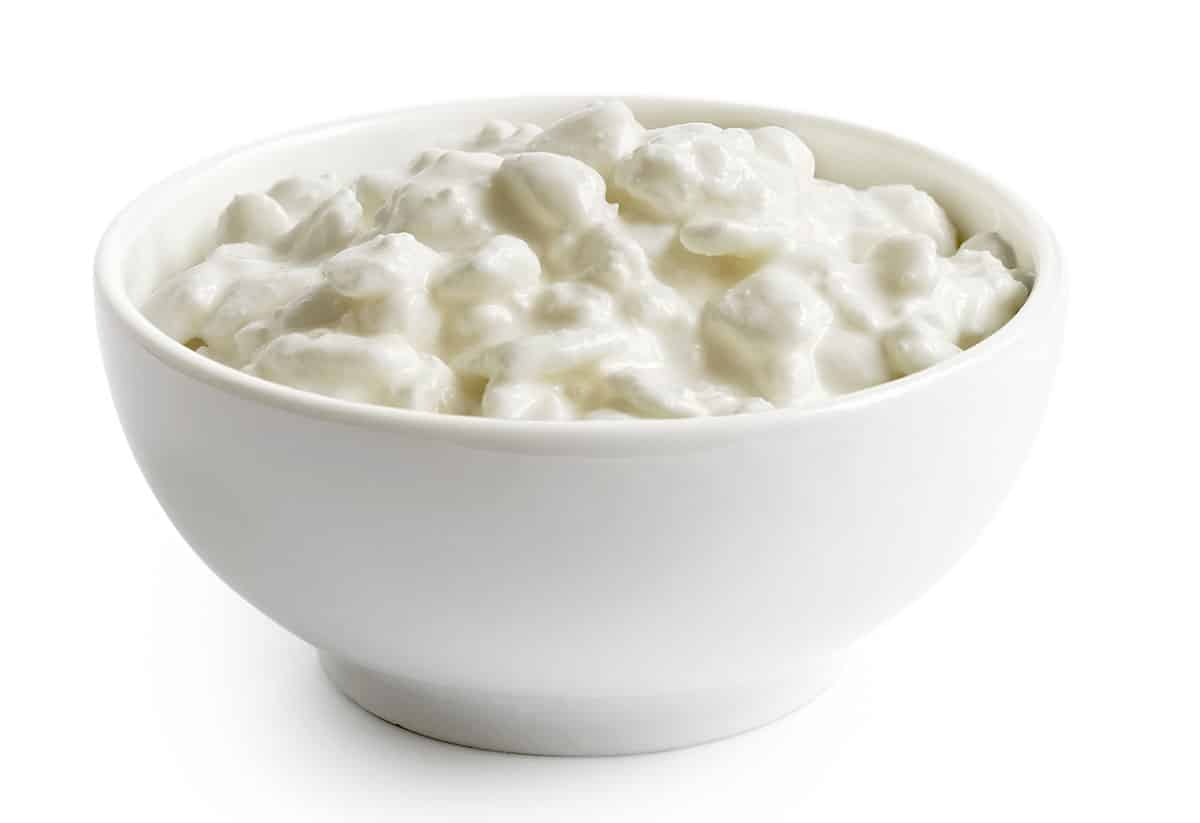
Cottage cheese is a great ricotta cheese substitute! It is a fresh cheese made from the curds of cow’s milk. Its mild, slightly tangy flavor and curd-like texture with small lumpy curds is a bit different from ricotta, but it generally substitutes nicely. Cottage cheese is a low-calorie option that brings more protein, vitamins, and minerals to your cooking.
Flavor and Texture Differences
When considering substituting cottage cheese for ricotta cheese, it’s important to note some key flavor and texture differences between the two. Ricotta cheese has a smoother, creamier texture and a milder, slightly sweet flavor compared to cottage cheese. Cottage cheese, on the other hand, has a curd-like texture with visible lumps and a slightly tangy taste. While the differences are subtle, they can impact the overall taste and mouthfeel of a dish. Depending on the recipe, these variations may or may not be noticeable.
How to Substitute Cottage Cheese for Ricotta Cheese
Substituting cottage cheese for ricotta cheese in recipes can be a practical and nutritious choice. To make the swap, you can follow these general guidelines:
- Texture Adjustment: If you want to match the smoother texture of ricotta, you can blend the cottage cheese in a food processor or blender until it reaches a smoother consistency. This works well in dishes like lasagna or stuffed pasta.
- Seasoning: Cottage cheese has a slightly tangier flavor, so you might want to adjust the seasoning to balance it out. Depending on the recipe, you can add a touch of sugar to sweet dishes or extra herbs and spices for savory ones.
- Quantities: In most recipes, you can substitute cottage cheese for ricotta cheese on a one-to-one basis. For example, if a recipe calls for one cup of ricotta, you can use one cup of cottage cheese instead.
- Draining Excess Liquid: Cottage cheese tends to have more liquid content compared to ricotta. Strain and drain excess liquid before using it in recipes to avoid making the dish too watery.
Best Uses for Replacing Ricotta Cheese with Cottage Cheese
Cottage cheese can be an excellent replacement for ricotta cheese in various dishes, especially when you want to reduce the fat content or add a slight tanginess to the flavor. Some of the best uses for substituting cottage cheese for ricotta include:
- Lasagna: Cottage cheese works well as a layering ingredient in lasagna, providing a creamy texture and a unique flavor twist. Try it as a substitute in our vegetarian lasagna to add protein.
- Stuffed Pasta: In dishes like stuffed shells or manicotti, cottage cheese can be used as a filling, offering a satisfying texture and flavor.
- Cheesecakes: Cottage cheese can be blended into cheesecake batter to create a creamy and slightly tangy dessert.
- Pancakes and Crepes: Incorporating cottage cheese into pancake or crepe batter can result in fluffier and more flavorful breakfast treats.
Cream Cheese
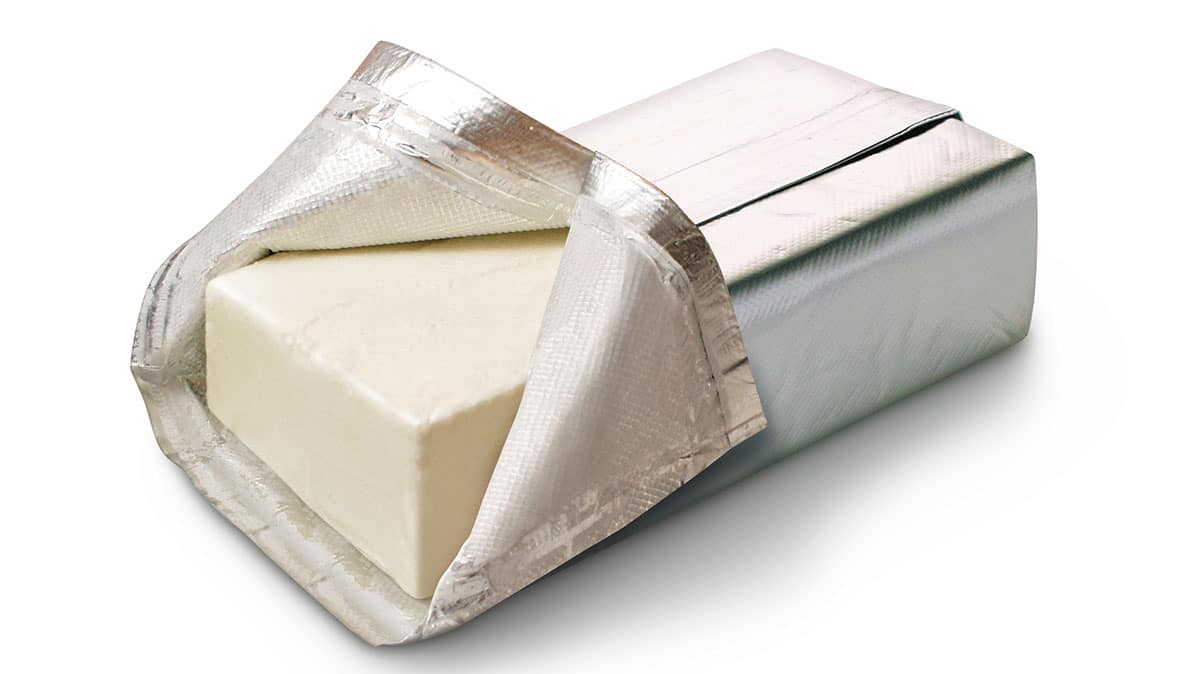
Cream cheese is probably our second choice as a ricotta cheese replacement. It is made from cow’s milk and is known for its smooth and creamy texture. Cream cheese is often tangy and has a mild, slightly sweet flavor. Cream cheese tends to be higher in fat and calories compared to ricotta, and is also typically lower in protein. The true superpower of cream cheese is its ability to be flavored to taste. While you can buy it this way, you can also make your own home-flavored cream cheese (5 ways).
Cream cheese was invented in Chester New York by Mr William Lawrence in 1872. He knew he was on to something good, so he bought an existing cheese factory and commercialized the creamy spread we love today.
Flavor and Texture Differences
Cream cheese has a tangy and creamy taste, which can be slightly sweet. It has a smooth, dense, and spreadable texture. In contrast, ricotta cheese has a milder, slightly grainy flavor with a more granular and lumpy texture. Ricotta is also known for its moistness. The choice to use cream cheese as a replacement will introduce a creamier and tangier element to your dishes compared to the more grainy and moist texture of ricotta.
How to Substitute Cream Cheese for Ricotta Cheese
Substitute using an equal amount of cream cheese for ricotta cheese. If a recipe calls for 1 cup of ricotta, you can replace it with 1 cup of cream cheese. You may need to adjust the consistency of the dish by adding a small amount of milk or cream to achieve the desired texture, as cream cheese is denser than ricotta. Keep in mind that this substitution will also influence the flavor of your dish due to the tanginess of cream cheese.
Best Uses for Replacing Ricotta Cheese with Cream Cheese
Cream cheese works best as a ricotta cheese replacement in cheesecakes, stuffed pasta dishes like manicotti or stuffed shells, and dips like spinach and artichoke dip. It can work in lasagna, but we would go with cottage cheese first.
Cream cheese can also add richness to desserts like cannoli filling or cream puffs. However, it may not be the ideal choice for dishes where ricotta’s grainy texture and mild flavor are integral, such as traditional Italian cannelloni or some types of stuffed pasta. Of course, any card-carrying Italian is going to tell you not to mess with cannoli!
Tofu
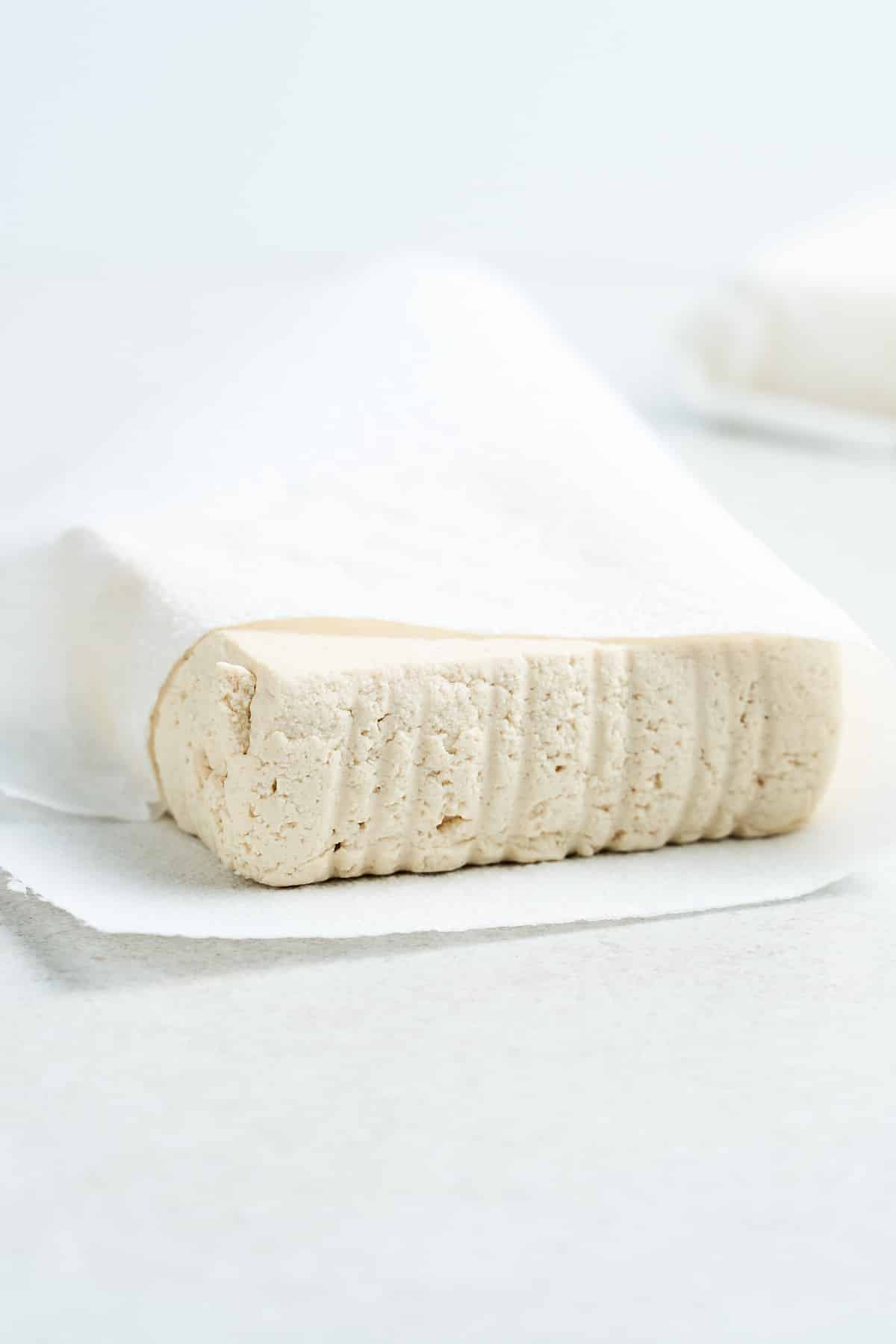
We believe tofu is the best ricotta replacement for vegan or lactose-free cooking. It is a plant-based protein source made from soybeans by curdling soy milk and then pressing the resulting curds into a block or other desired shapes. Tofu comes in various textures, from silken and soft to firm and extra-firm. Tofu is an excellent source of protein, low in saturated fats, and contains essential nutrients such as iron, calcium, and magnesium, making it a nutritious alternative to ricotta cheese. While you can find vegan ricotta cheese in specialty markets, tofu is an easy-to-find nutrient-dense option.
Flavor and Texture Differences
Ricotta cheese has a creamy, slightly sweet, and grainy texture, while tofu has a neutral taste and can take on the flavors of the ingredients it’s cooked with. Depending on the type of tofu you choose, you can achieve varying textures, with silken tofu being the closest in texture to ricotta when blended. However, tofu may lack the distinct tanginess of ricotta, so you may need to add lemon juice or other acidic ingredients to mimic the flavor.
How to Substitute Tofu for Ricotta Cheese
Substituting tofu for ricotta cheese in recipes requires some adjustments. Here’s a basic guide to make the swap:
- Choose the Right Tofu: Depending on the dish, select the appropriate tofu texture. For dishes where ricotta’s creamy texture is essential, like lasagna, opt for silken tofu. For dishes where ricotta’s texture is less critical, such as stuffed shells, firm or extra-firm tofu works well.
- Prepare the Tofu: Drain and press the tofu to remove excess moisture. This step is crucial, as it helps the tofu absorb flavors and achieve a better consistency.
- Season and Flavor: Add seasonings and flavors to the tofu. Common additions include salt, pepper, garlic powder, nutritional yeast (for a cheesy flavor), and lemon juice or vinegar (for acidity). Blend or mash the tofu to your desired consistency.
Best Uses for Replacing Ricotta Cheese with Tofu
Tofu is a great option for dairy-free cheesecakes and creamy pasta sauces. In these applications, tofu’s ability to take on different flavors while providing a creamy consistency makes it a suitable alternative to ricotta. It can certainly be used as stuffed shells or vegan lasagna.
Mascarpone Cheese
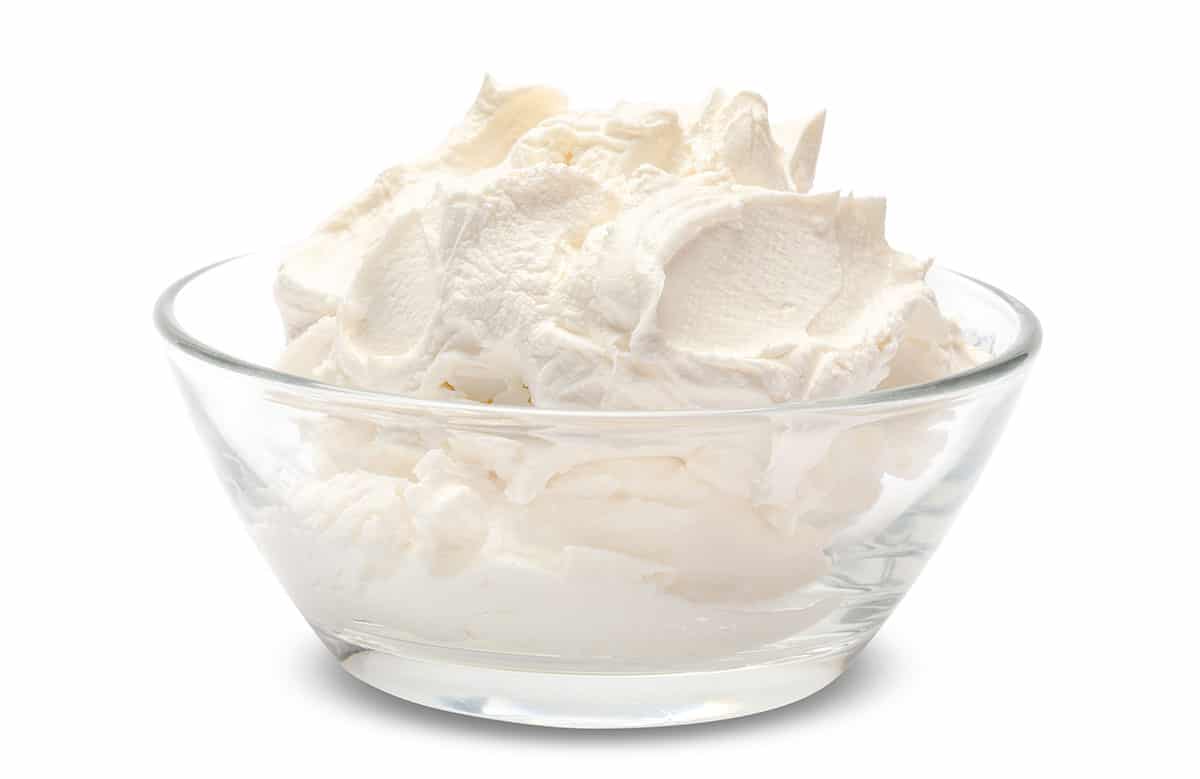
Mascarpone cheese is a creamy and luxurious Italian cheese with a velvety texture. It is traditionally made of heavy cream from cow’s milk and is a staple in many Italian desserts and savory dishes.
Mascarpone is a fresh cheese that is unaged, similar to cream cheese, but it has a distinct flavor and texture that sets it apart. It is known for its mild and slightly sweet taste, making it incredibly versatile in both sweet and savory applications. Mascarpone is commonly used in dishes like tiramisu, cheesecakes, pasta sauces, and more. Oh, and I guess we should say that in select uses it is a good ricotta cheese alternative. Nutrition-wise, mascarpone is higher in saturated fat and calories than ricotta.
Flavor and Texture Difference
Ricotta cheese is a soft and grainy cheese with a mild, slightly sweet flavor. In contrast, mascarpone cheese has a much smoother and creamier texture, akin to whipped cream, and offers a richer, buttery flavor profile. Mascarpone’s creaminess can add a luxurious touch to dishes, while ricotta’s graininess provides a more rustic texture. The flavor of mascarpone is milder and less tangy compared to ricotta.
How to Substitute Mascarpone Cheese for Ricotta Cheese
When making the swap, you can typically replace ricotta with mascarpone at a 1:1 ratio. However, because mascarpone is creamier and richer, you may want to adjust the quantity based on personal preference and the dish you’re preparing.
Best Uses for Replacing Ricotta Cheese with Mascarpone Cheese
Mascarpone cheese is particularly well-suited for replacing ricotta in dessert recipes. It’s an excellent choice for desserts like cheesecake and tiramisu, where a smooth and luxurious texture is desired. It also works well as a cannoli filling and in fruit tarts.
When used in savory dishes, such as pasta sauces, or stuffed pasta like ravioli or manicotti, mascarpone can create a velvety, indulgent sauce. It’s also a fantastic addition to risotto, where it can contribute to a creamy consistency and enhance the overall flavor. However, for recipes where ricotta’s grainy texture is an essential element, such as traditional lasagna, sticking with ricotta or blending the two cheeses may be the best approach.
Vegan Ricotta Cheese
Vegan Ricotta cheese is a dairy-free alternative to traditional ricotta cheese, which is made from cow’s milk. It is specifically designed for individuals who follow a vegan diet or those who are lactose intolerant. Vegan Ricotta is typically made from plant-based ingredients such as almonds, cashews, tofu, or soybeans. These ingredients are blended and seasoned to mimic the flavor and texture of traditional ricotta, creating a suitable dairy-free replacement.
Flavor and Texture Differences
Traditional Ricotta is creamy, slightly tangy, and has a rich, milky taste. Vegan Ricotta aims to replicate these characteristics but may have a slightly nuttier or tofu-based undertone. In terms of texture, vegan Ricotta is generally smooth and spreadable, but it might have a firmer or grainier texture depending on the base ingredients used. The seasoning and blend vary among brands, so the taste and texture can differ from one product to another.
How to Substitute Vegan Ricotta Cheese for Ricotta Cheese
You can use the vegan alternative in recipes like lasagna, stuffed pasta shells, or even on pizzas. To make the switch, replace the same quantity of traditional ricotta with vegan Ricotta. When using vegan ricotta in savory dishes, you may want to season it with salt, pepper, and herbs to match the flavor profile of the original recipe. Keep in mind that vegan ricotta may have different moisture levels, so adjust accordingly for the desired consistency in your dishes.
Best Uses for Vegan Ricotta Cheese
It works well in vegan lasagna, stuffed shells, and cannelloni, providing a creamy and flavorful filling. Vegan ricotta also complements plant-based pizza toppings, offering a dairy-free option for cheese lovers.
Beyond Italian dishes, you can use it as a topping for baked potatoes, in creamy vegan pasta sauces, or as a spread on toast or crackers. Its versatility makes it suitable for various savory and even some sweet recipes, such as vegan cheesecakes.
Homemade Ricotta Cheese
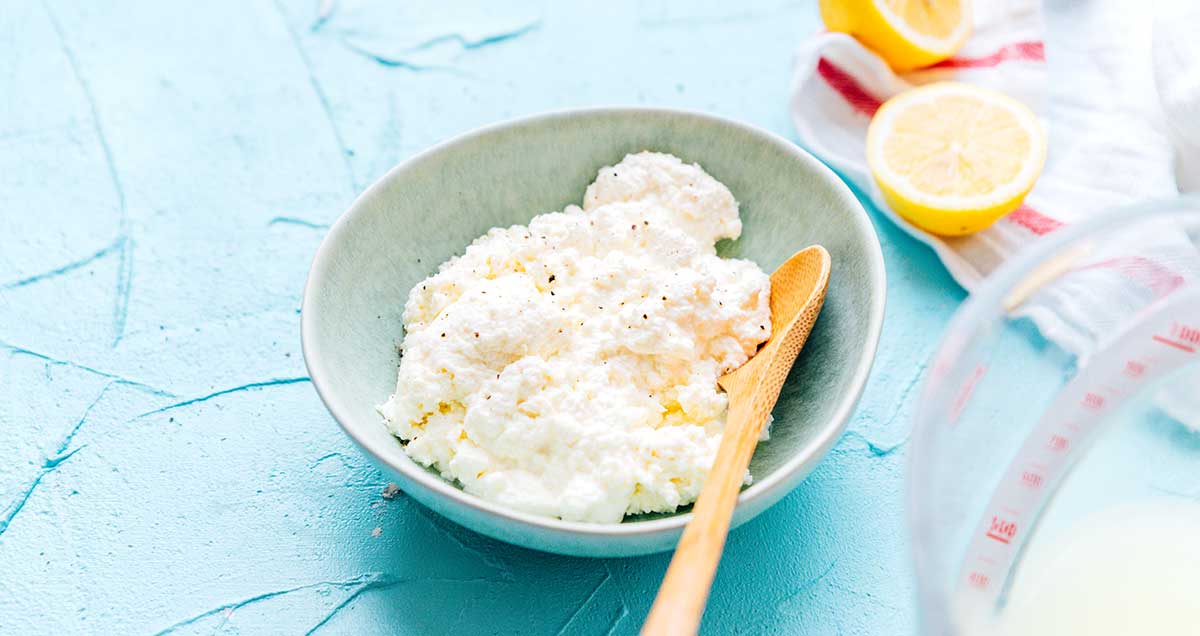
You can easily make your own homemade cottage cheese, and when you do you know exactly what went into it. Here is an easy three-ingredient recipe developed in our test kitchen that you can literally make in 5 minutes (2 minutes prep and 3 minutes cooking in the microwave!). Okay confession, it will have to strain and sit for about an hour but no action will be required from you. The whole thing is faster than driving to the store when you are making lasagna and forget the ricotta.
Our homemade ricotta has only three ingredients, plus an optional:
- Whole Milk: Whole milk makes up the base of the ricotta. You’ll need 2 cups for this recipe. Oh, and stick with whole milk to achieve the desired texture and consistency. You may be able to get away with using 2%, but skim milk won’t work well.
- White Vinegar or Lemon Juice: You can use either white vinegar or lemon juice to curdle the milk. 2 tablespoons should do the trick.
- Salt: Finally, a dash of salt does wonders for the flavor of this cheese. Use ½ tsp for a perfectly salty finish.
Okay, we have listed what you need, and if this has piqued your interest follow our link to 5 Minute Homemade Ricotta for the simple instructions with photos.
Lactose-Free Ricotta Cheese
This is the easiest option for people who want ricotta cheese, but have a lactose intolerance. It is generally made from some combination of almond flour, water, lemon juice, nutritional yeast, kosher salt, and garlic powder. It can be a bit hard to find, but check Whole Foods or specialty markets. Use it like you would any other ricotta cheese.
Feta Cheese
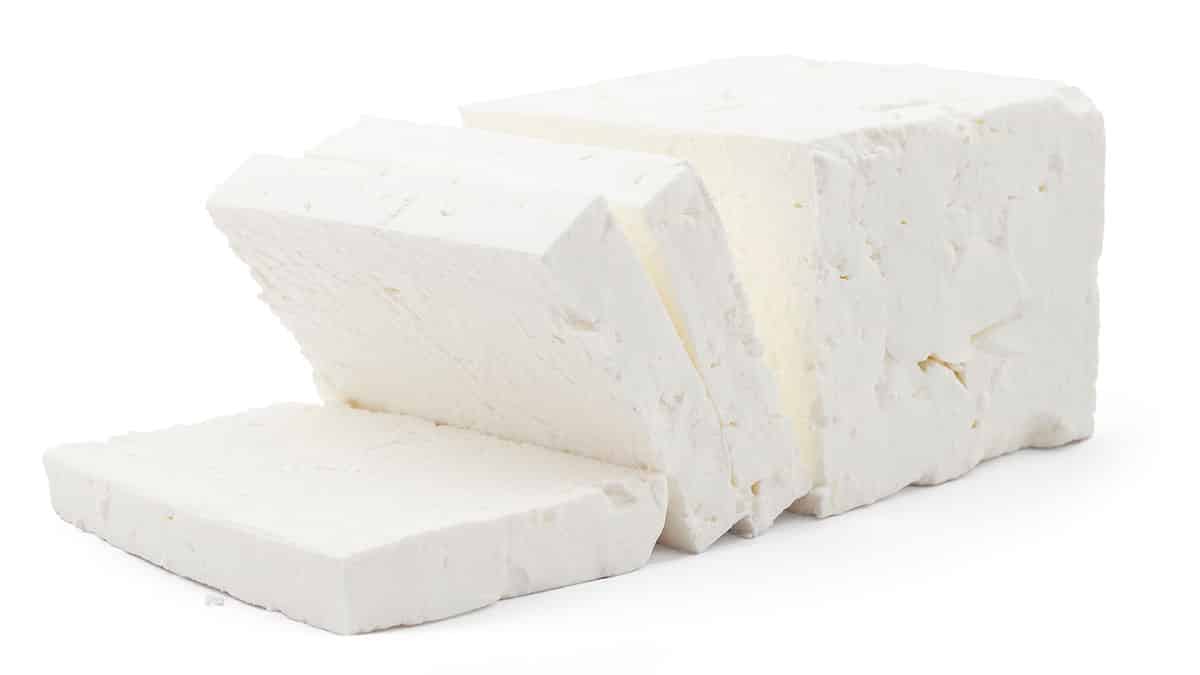
Feta is a popular Greek cheese known for its crumbly texture and tangy flavor. It is traditionally made from sheep’s milk or a combination of sheep’s and goat’s milk, although you can find variations made with cow’s milk as well. Feta cheese is typically aged in brine, which contributes to its characteristic salty taste.
Flavor and Texture Differences
Ricotta cheese has a mild and creamy consistency, whereas feta is crumbly and has a tangy, salty taste. Feta’s strong flavor can add a bold and distinctive element to your cooking, which may or may not be what you’re looking for. Additionally, feta’s crumbly texture contrasts with ricotta’s creaminess, which can affect the overall mouthfeel and appearance of your recipe.
How to Substitute Feta for Ricotta Cheese
To replace ricotta cheese with feta in your recipes plan on a 1:1 replacement, but you’ll need to make some adjustments. First, crumble the feta cheese to a similar consistency as ricotta, or you can blend it in a food processor to achieve a smoother texture. Keep in mind that feta is saltier, so you may want to reduce the amount of salt you add to your recipe.
Best Uses for Replacing Ricotta Cheese with Feta
Feta cheese is an excellent substitute for ricotta in recipes where you want a more pronounced and salty flavor. Feta’s tangy flavor can work well in savory dishes like lasagna, stuffed peppers, or pasta sauces. However, it may not be the best choice for sweet desserts that rely on ricotta’s mild sweetness.
Sour Cream
Sour cream is made by fermenting regular cream with lactic acid bacteria, which gives it a tangy flavor and a creamy texture. It’s commonly used as a topping for tacos, baked potatoes, and nachos, and it’s used to add creaminess to dips, dressings, and soups. It isn’t an ideal substitute for ricotta cheese, but most of us have it in the refrigerator and it will do in a pinch.
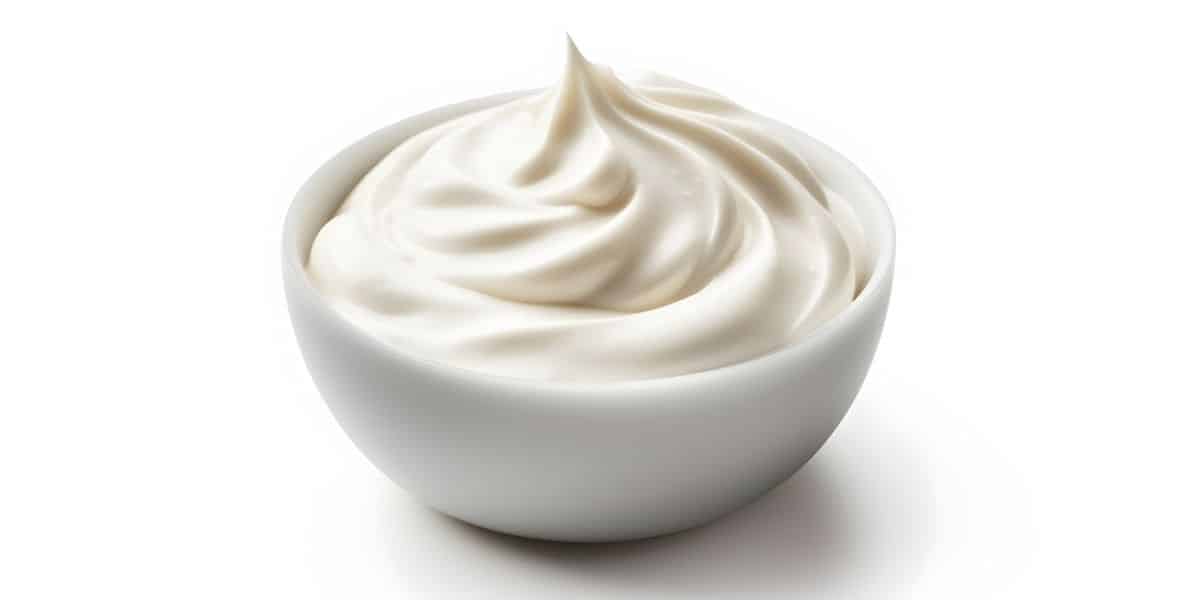
Flavor and Texture Differences
When it comes to replacing ricotta cheese with sour cream, there are some notable flavor and texture differences to consider. Ricotta cheese has a mild, slightly sweet flavor with a grainy texture, while sour cream has a tangy, sour taste with a smooth and creamy texture. The tanginess of sour cream can add a unique zing to dishes, which isn’t present in most ricotta. The texture of sour cream is also more liquidy compared to the thicker and grainier consistency of ricotta. These differences can impact the overall taste and mouthfeel of your recipe. Sourcream is also a higher calorie and higher fat option.
How to Substitute Sour Cream For Ricotta Cheese
You can substitute sour cream for ricotta cheese on a 1:1 basis in many certain recipes, but it’s essential to consider the specific dish you’re making. Here’s a general guideline for making the substitution:
- Adjust the Consistency: Sour cream is much more liquidy than ricotta, so you will likely need to adjust the recipe’s consistency. Start by using an equal amount of sour cream as the ricotta called for in the recipe. If the mixture seems too thin, you can thicken it with ingredients like flour or cornstarch, or by simply using less sour cream. Consider adding a less than 1:1 amount, testing it, then adding more.
- Taste Adjustment: Keep in mind that sour cream has a tangy flavor, which can be more pronounced than the mild taste of ricotta. Taste the dish as you go and consider balancing the tanginess with other ingredients like sugar, herbs, or spices to achieve the desired flavor profile.
- Baking Considerations: In baked dishes like lasagna or stuffed pasta shells, sour cream can work as a creamy filling, but the texture will be different. It won’t provide the same grainy texture as ricotta, so be prepared for a smoother result.
Best Uses for Replacing Ricotta Cheese with Sour Cream
Sour cream can be an excellent substitute in recipes like dips, creamy soups, and some desserts like coffee cake or muffins. However, in dishes where ricotta is a key ingredient, like traditional Italian cannoli or certain types of cheesecake, it’s best to stick with ricotta for authenticity.
Nutrition Content of Ricotta Cheese Vs Substitutes
Using my nutritionist hat, I wanted to touch on the nutritional components of ricotta cheese. The table below shows the nutritional content of 1 ounce of ricotta cheese and three of the recommended substitutes.
Clearly, cottage cheese is a low-calorie option, but ricotta isn’t really a high-calorie cheese to begin with. Other than that observation, we will let you draw your own conclusions.
| 1 Ounce Serving | Ricotta | Cream Cheese | Cottage |
| Calories | 49 | 100 | 20 |
| Grams Protein | 3.5 | 2.2 | 3 |
| Grams saturated fat | 2.2 | 5.6 | 0.5 |
| % RDA of Vitamin A | 4 | 0 | 1 |
| % RDA of Vitamin B12 | 9 | 1 | 11 |
| % RDA of Potassium | 1 | 1 | 3 |
| % RDA of Zinc | 2 | 1 | 2 |
| % RDA of Iron | 1 | 1 | 1 |
| % RDA of Calcium | 14 | 5 | 6 |
| mg Sodium | 54 | 130 | 103 |
So in conclusion, what is the best substitute for ricotta cheese? We have to go with cottage cheese, but this is a matter of personal preference. Try others and let us know what you think in the comments section.
This wraps up our look at ricotta cheese substitutes. We hope you found some information here you can use, and as always, happy cooking!
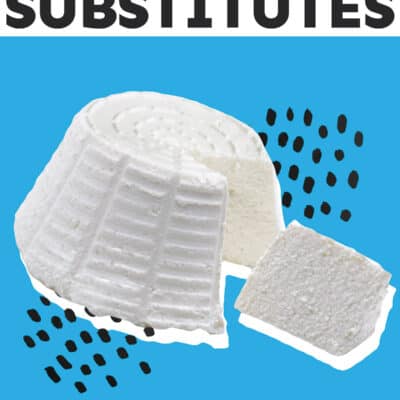
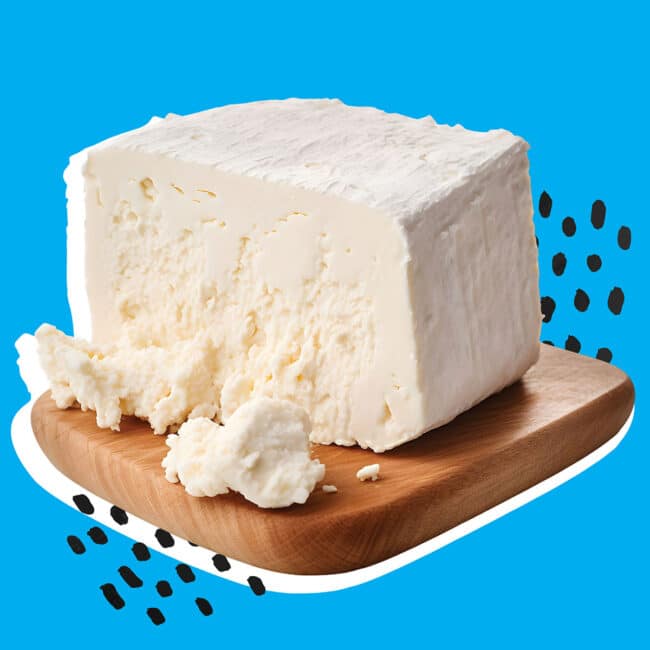
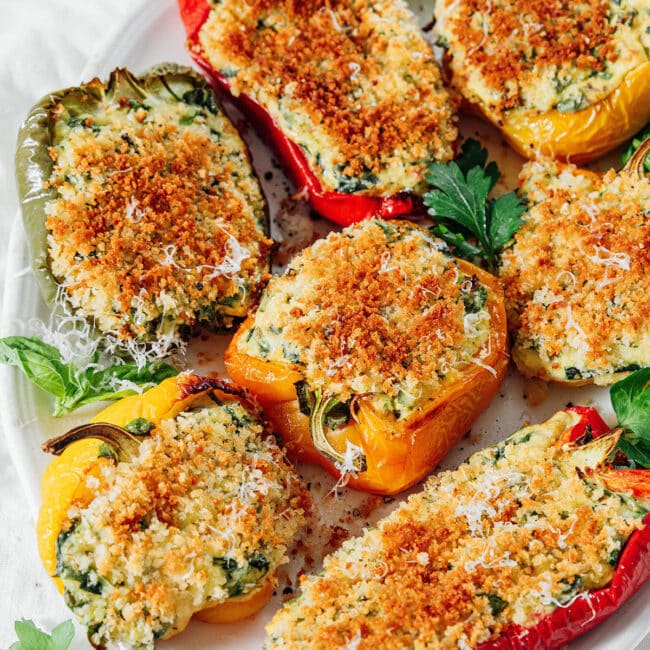
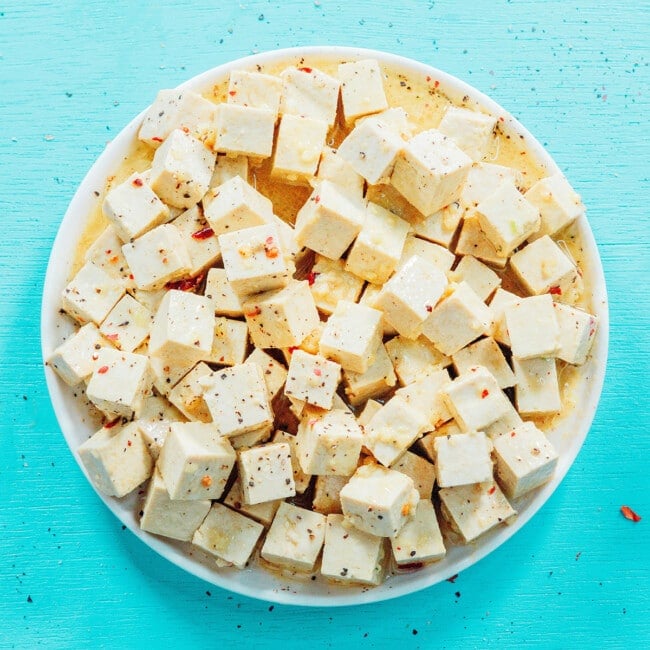
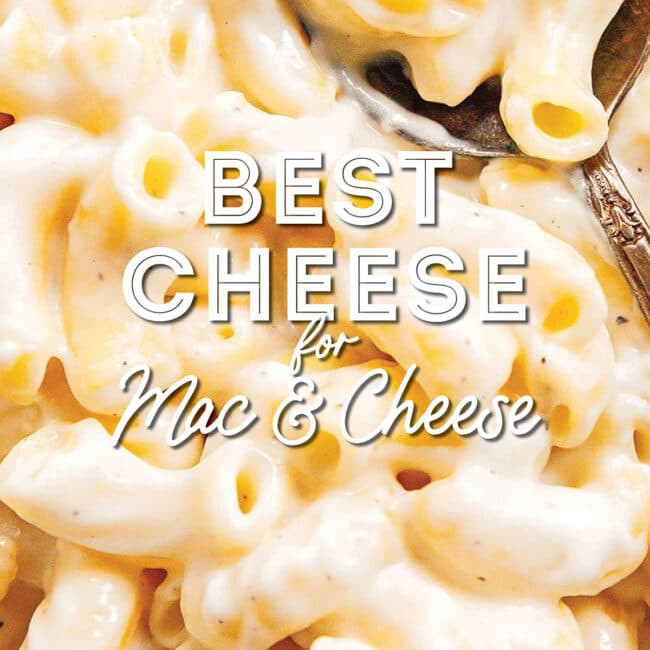
Leave a Comment